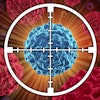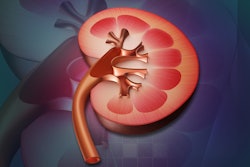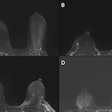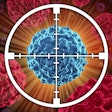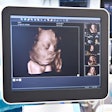Cryoablation is a safe and effective treatment method for breast cancer, according to research published July 10 in the American Journal of Roentgenology.
A team led by Karim Oueidat, MD, from Brown University in Providence, RI, found that cryoablation demonstrated a near-perfect technical success rate in women who were treated for primary breast cancer.
“In patients with breast cancer who underwent cryoablation with locally curative intent despite being ineligible for cryoablation clinical trials, such treatment had a low frequency of adverse events, and a high frequency of procedural technical success,” Oueidat and colleagues wrote.
Medical imaging researchers in recent years have looked to cryoablation as a minimally invasive treatment option for treating various tumors. Recent studies have shown that this method is successful at treating breast cancer in women who may be poor candidates for surgery.
The researchers noted that clinical trials for breast cancer cryoablation have strict inclusion criteria. This means that women with potentially treatable disease or have unfavorable patient or tumor characteristics are typically excluded from such studies.
Oueidat and co-authors assessed the safety and outcomes of primary breast cancer cryoablation without surgical excision in women who are not eligible for prospective cryoablation clinical trials. They included data collected between 2000 and 2021 from seven institutions.
The study authors classified cryoablation procedures as technically successful if they were not prematurely ended, achieved intended treatment parameters, and showed no evidence of residual disease on the first imaging follow-up. They also recorded results from follow-up biopsies and classified ipsilateral breast tumor recurrences diagnosed during follow-up as true recurrence or new primary disease.
The study included data from 112 women with a median age of 71. Of the total, seven women (6.3%) experienced a minor adverse event. The researchers reported that no moderate or major adverse event occurred otherwise.
Cryoablation demonstrated a technical success rate of 98.2% (n = 110). During a median follow-up of two years, 22 of the women (20%) underwent biopsy for suspicious imaging findings in the ipsilateral breast. This resulted in benign concordant findings in nine of the 22 women (40.9%) and ipsilateral breast tumor recurrences in the remaining 12 women (54.5%).
Overall, 12 of the total women (10.9%) experienced ipsilateral breast tumor recurrences, including seven with true recurrence and five with new primary disease. Three of these women had received earlier adjuvant or neoadjuvant therapy.
Finally, when the researchers accounted for death as a competing risk, the cumulative incidence of ipsilateral breast tumor recurrence was 5.3%, 12.2%, and 18.2% at one, two, and three years, respectively. The team noted that this frequency is higher than that of previous prospective clinical trials.
Still, the study authors highlighted that their findings show how breast cancer cryoablation can be safely applied in a larger patient population than defined by clinical trial inclusion criteria.
“In select individuals with unfavorable patient or tumor characteristics, cryoablation remains a safe alternative to surgery that has overall good outcomes,” they wrote. “These findings may be particularly relevant in patients who are also poor surgical candidates due to comorbidities.”
The full results can be found here.

